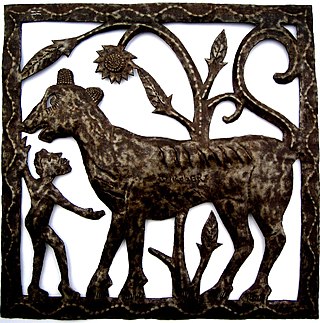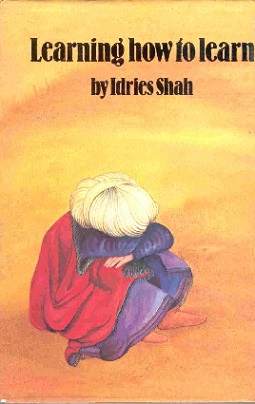
Nasreddin or Nasreddin Hodja (1208–1285) is a character in the folklore of the Muslim world from the Balkans to China, and a hero of humorous short stories and satirical anecdotes. There are frequent statements about his existence in real life and even archaeological evidence in specific places, for example, a tombstone in the city of Akşehir, Turkey. At the moment, there is no confirmed information or serious grounds to talk about the specific date or place of Nasreddin's birth, so the question of the reality of his existence remains open.

A fairy tale is a short story that belongs to the folklore genre. Such stories typically feature magic, enchantments, and mythical or fanciful beings. In most cultures, there is no clear line separating myth from folk or fairy tale; all these together form the literature of preliterate societies. Fairy tales may be distinguished from other folk narratives such as legends and explicit moral tales, including beast fables. Prevalent elements include dragons, dwarfs, elves, fairies, pixies, giants, gnomes, goblins, griffins, merfolk, monsters, talking animals, trolls, unicorns, witches, wizards, magic, and enchantments.

Idries Shah, also known as Idris Shah, Indries Shah, né Sayed Idries el-Hashimi and by the pen name Arkon Daraul, was an Afghan author, thinker and teacher in the Sufi tradition. Shah wrote over three dozen books on topics ranging from psychology and spirituality to travelogues and culture studies.
A teaching story is a narrative that has been deliberately created as a vehicle for the transmission of wisdom. The practice has been used in a number of religious and other traditions, though writer Idries Shah's use of it was in the context of Sufi teaching and learning, within which this body of material has been described as the "most valuable of the treasures in the human heritage". The range of teaching stories is enormous, including anecdotes, accounts of meetings between teachers and pupils, biographies, myths, fairy tales, fables and jokes. Such stories frequently have a long life beyond the initial teaching situation and have contributed vastly to the world's store of folklore and literature.
Saira Shah is a British author, reporter and documentary filmmaker. She produces, writes and narrates current affairs films.

Tahir Shah is a British author, journalist and documentary maker of Afghan-Indian descent.

Sirdar Ikbal Ali Shah was an Indian-Afghan author and diplomat descended from the Sadaat of Paghman. Born and educated in India, he came to Britain as a young man to continue his education in Edinburgh, where he married a young Scotswoman.

Ivan Tyrrell is a British educator, writer, and artist. He lives with his wife Véronique in the Cotswolds, England.

Amina Maxwell-Hudson was a British anthologiser of Sufi stories and folk tales, and was for many years the Chairperson of the College of Storytellers. She was the sister of the Sufi writers Idries Shah and Omar Ali-Shah, and the daughter of Sirdar Ikbal Ali Shah and Saira Elizabeth Luiza Shah, a Scottish woman. Her nephew is the travel writer and documentary filmmaker Tahir Shah; her nieces are Safia Shah and the writer and documentary filmmaker Saira Shah.

In Arabian Nights is a travel book by Anglo-Afghan author Tahir Shah illustrated by Laetitia Bermejo. which takes up where his previous book The Caliph's House leaves off, recounting, among much else, events at Dar Khalifa, the Caliph's House, in Casablanca where the Shah family have taken up residence.

Saiyed Muhammed Shah, better known by his title as Jan-Fishan Khan, was a 19th-century Afghan noble chieftain (nawab) He participated in the First Anglo-Afghan War (1839–42) and the Indian Rebellion of 1857, and on both occasions, he supported the British. For his services to the British, Khan was granted the estate of Sardhana and is the forefather of the Nawabs of Sardhana.

Safia Thomas is a British writer, editor, television news producer and member of the Afghan-Indian Shah family.

The Tiger, the Brahmin and the Jackal is a popular Indian folklore with a long history and many variants. The earliest record of the folklore was included in the Panchatantra, which dates the story between 200 BCE and 300 CE.

Learning How to Learn: Psychology and Spirituality in the Sufi Way is a book by the writer Idries Shah that was first published by Octagon Press in 1978. Later editions by Harper & Row (1981) and Penguin Books include an introduction by Nobel Prize Winner Doris Lessing.
Octagon Press was a cross-cultural publishing house based in London, UK. It was founded in 1960 by Sufi teacher, Idries Shah to establish the historical and cultural context for his ideas. The company ceased trading in 2014.
The Idries Shah Foundation (ISF) is an independent educational and cultural charity, set up by the family of the late thinker, writer, and teacher in the Sufi mystical tradition, Idries Shah, who wrote over three dozen books on topics ranging from psychology and spirituality to travelogues and culture studies.
Margaret Read MacDonald is an American storyteller, folklorist, and award-winning children's book author. She has published more than 65 books, of stories and about storytelling, which have been translated into many languages. She has performed internationally as a storyteller, is considered a "master storyteller", and has been dubbed a "grand dame of storytelling". She focuses on creating "tellable" folktale renditions, which enable readers to share folktales with children easily. MacDonald has been a member of the board of the National Storytelling Network and president of the Children's Folklore Section of the American Folklore Society.
Cola Pesce, also known as Pesce Cola is an Italian folktale about a merman, mentioned in literature as early as the 12th century. Many variants and retellings have been recorded.

The Exploits of the Incomparable Mulla Nasrudin is a book by the writer Idries Shah, It consists of jokes and anecdotes involving the wise fool of Middle Eastern folklore, Mulla Nasrudin. Published by Octagon Press in 1966, the book was re-released in paperback, ebook and audiobook editions by The Idries Shah Foundation in 2014 and 2015.
The Aesop Prize and Aesop Accolades are conferred annually by the Children’s Folklore Section of the American Folklore Society upon English language books for children and young adults, both fiction and nonfiction.













